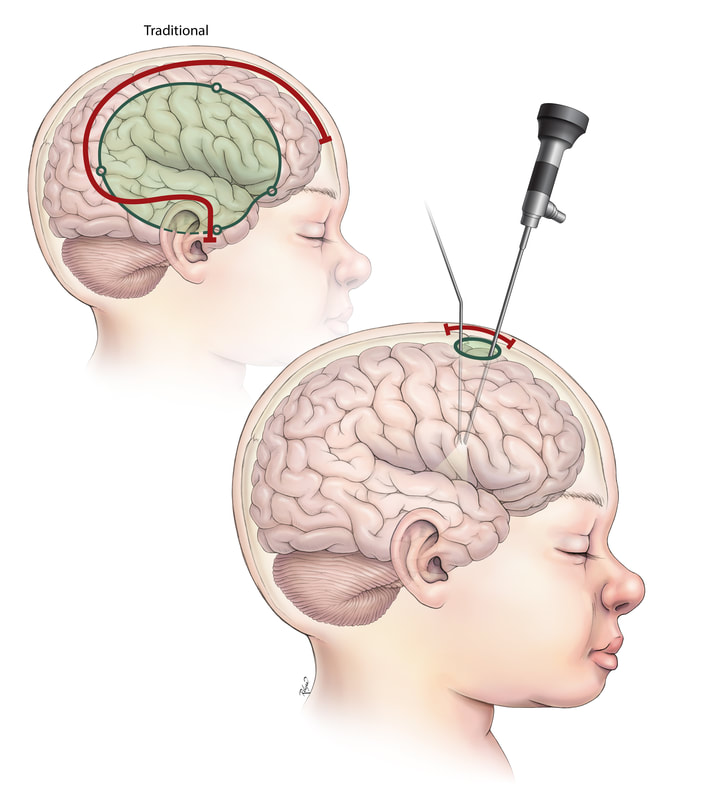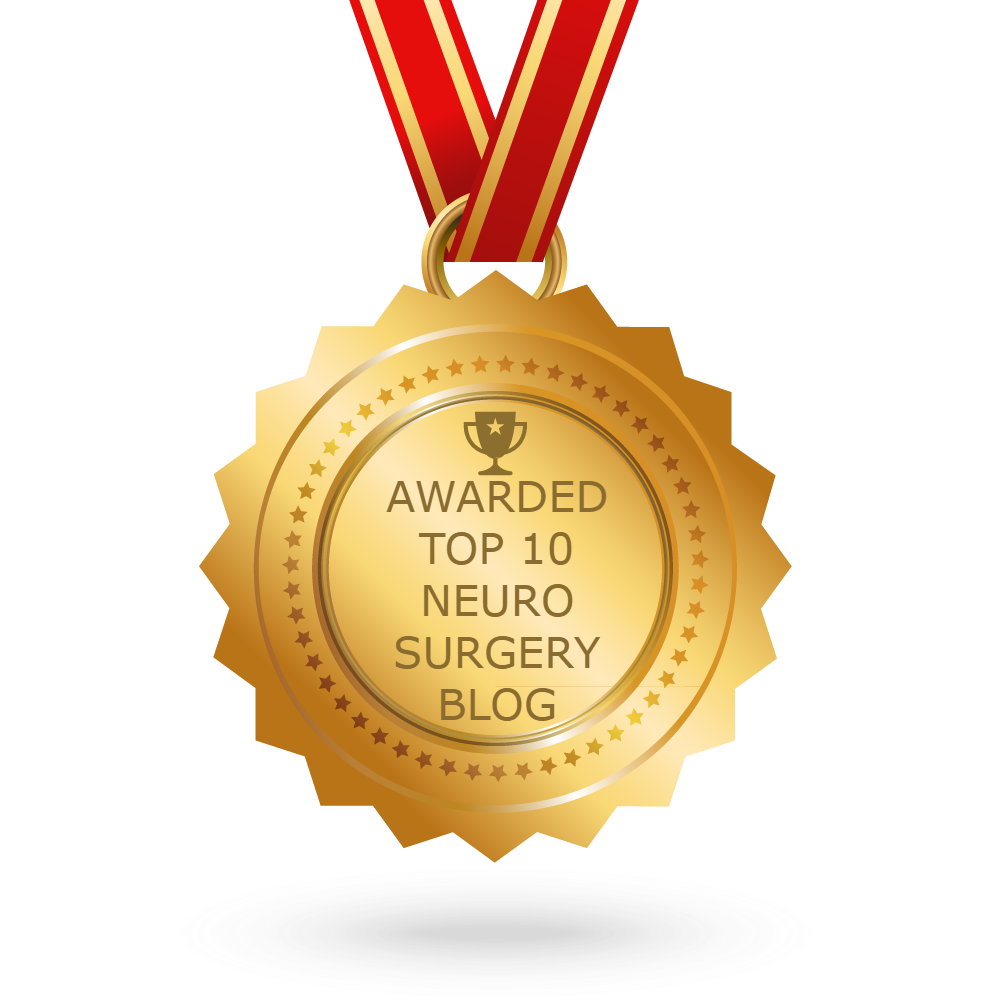|
We have a new epilepsy surgery offering to our patients: endoscopic hemispherectomy. I am excited to see how remarkably well patients recover after endoscopic surgery! Unlike traditional open hemispherectomy/hemispherotomy surgery which involves a large craniotomy (skull bone opening) and a large question-mark-shaped incision on the top and side of the head to disconnect the left hemisphere from the right hemisphere, I can perform the hemispherectomy surgery through a small opening and with the help of an endoscope – a camera used in the procedure. The scar involves only a small opening at the top of the head. This smaller access surgery translates to less blood loss, less pain/discomfort, and quicker recovery. This type of surgery is relatively novel, as it has been reported by only two other centers in the world - one in India and one in Detroit. This type of minimal access surgery to treat seizures fits with our program's expertise with minimally invasive surgery and enhanced recovery, and expands the comprehensive offering of our multidisciplinary comprehensive pediatric epilepsy surgery program. We focus on delivering individualized care -- offering the right diagnostic workup, the right treatment, the right surgical plan tailored for each patient. This new endoscopic surgery application was possible with intricate understanding of anatomy with my experience with open hemispherectomy surgeries, which I have written about in textbooks. Recently, I have spent time developing and perfecting these minimal-access surgical approaches in the anatomy lab, anticipating and working out all contingencies before offering this novel endoscopic surgery to patients. While the epilepsy surgery program in my group has been known for laser ablation surgeries and traditional open surgeries, we continue to learn from our collective experience. We recognize that not every disease process or surgical goal can be addressed with the laser. There was room for development of better surgical techniques – something in between a laser and a traditional open surgery. Incorporating the use of a camera – the endoscope – gave a way to see what I need to see, while allowing for a smaller opening to safely achieve what needed to be done in surgery. Epilepsy surgeries I offer through an endoscope include corpus callosotomy and hemispherectomy. Illustration developed with our talented medical illustrator, Kathy Relyea.
Comments are closed.
|
Pediatric Neurosurgery teamThings we are passionate about Archives
May 2023
Other linksmy TCH blog post on - organizing your medical records for doctor's appointments - Craniosynostosis 101 our patients' moms blog about their family's - epilepsy surgery journey - craniosynostosis surgery journey some of our inspiring patient and family stories in the news: - epilepsy surgery - craniofacial surgery - AVM surgery Cross-post & links to my posts on other sitesUpdates on pediatric cerebrovascular disease in #NeurosurgeryBlog
Comments on health policy, pediatric neurosurgery, and the Affordable Care Act in the #NeurosurgeryBlog Sharing on the "ask-the-doctor" series on the Children's Craniofacial Association's blog - helmet FAQs: after endoscopic craniosynostosis surgery - helmet FAQs: positional plagiocephaly Top rated neuroscience blog
|
SITE MAP |
Content is not medical advice. Disclaimer.
|


